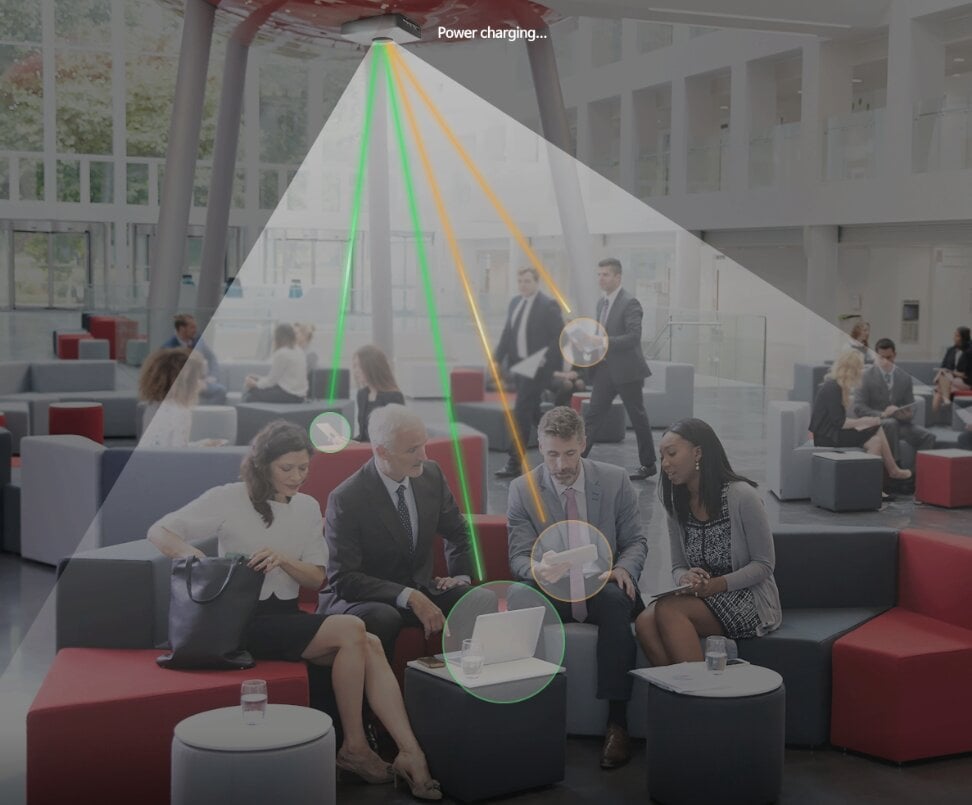Photonics HandbookResearch & Technology
Wireless Power Transfer System Brings Automated Charging Potential
SEOUL, South Korea, Sept. 1, 2022 — A wireless charger developed at Sejong University in South Korea overcomes some of the challenges that have hindered previous attempts to develop safe and convenient on-the-go charging systems. The new system uses infrared light to safely transfer high levels of power.
Laboratory tests showed that the system could transfer 400 mW of light power over distances of up to 30 m. This power is sufficient for charging sensors, and with further development, it could be increased to levels necessary to charge mobile devices.
"The ability to power devices wirelessly could eliminate the need to carry around power cables for our phones or tablets," said research team leader Jinyong Ha. "It could also power various sensors such as those in Internet of Things devices and sensors used for monitoring processes in manufacturing plants."

Researchers created a system that uses infrared light to safely transfer high levels of power over distances of up to 30 m. If the line of sight between the system and the device is broken, the laser automatically switches to a safe low-power mode. Courtesy of Jinyong Ha/Sejong University.
Several techniques have been studied for long-range wireless power transfer. However, it has been difficult to safely send enough power over meter-level distances.
To overcome this challenge, the researchers optimized a method called distributed laser charging, which has recently gained more attention for this application because it provides safe high-power illumination with less light loss.
"While most other approaches require the receiving device to be in a special charging cradle or to be stationary, distributed laser charging enables self-alignment without tracking processes as long as the transmitter and receiver are in the line of sight of each other," Ha said. "It also automatically shifts to a safe low-power delivery mode if an object or a person blocks the line of sight."
Distributed laser charging works somewhat like a traditional laser, but instead of the optical components of the laser cavity being integrated into one device, they are separated into a transmitter and receiver. When the transmitter and receiver are within a line of sight, a laser cavity is formed between them over free space, which allows the system to deliver light-based power. If an obstacle cuts the transmitter-receiver line of sight, the system automatically switches to a power-safe mode, achieving hazard-free power delivery in the air.
In their system, the researchers used an erbium-doped fiber amplifier optical power source with a central wavelength of 1550 nm. This wavelength poses no danger to human eyes or skin. Another key component that they used was a wavelength division multiplexing filter that created a narrowband beam with optical power within the safety limits for free space propagation.
"In the receiver unit, we incorporated a spherical ball lens retroreflector to facilitate 360-degree transmitter-receiver alignment, which maximized the power transfer efficiency," Ha said. "We experimentally observed that the system's overall performance depended on the refractive index of the ball lens, with a 2.003 refractive index being the most effective."
To demonstrate the system, the researchers set up a 30-m separation between a transmitter and a receiver. The transmitter was made of the erbium-doped fiber amplifier optical source, and the receiver unit included a retroreflector, a photovoltaic cell that converts the optical signal to electrical power, and an LED that illuminates when power is being delivered. This receiver, which is about 10 × 10 mm, can easily be integrated into devices and sensors.
The experimental results showed that a single-channel wireless optical power transfer system could provide an optical power of 400 mW with a channel linewidth of 1 nm over a distance of 30 m. The photovoltaic converted this to an electrical power of 85 mW. The researchers also showed that the system automatically shifted to a safe power transfer mode when the line of sight was interrupted by a human hand. In this mode, the transmitter produced an extremely low-intensity light that did not pose any risk to people.
"Using the laser charging system to replace power cords in factories could save on maintenance and replacement costs," Ha said. "This could be particularly useful in harsh environments, where electrical connections can cause interference or pose a fire hazard."
The researchers are working to make the system more practical. For example, the efficiency of the photovoltaic cell could be increased to better convert light into electrical power. The team also plans to develop a way to use the system to charge multiple receivers simultaneously.
The research was published in Optics Express (www.doi.org/10.1364/oe.468766).
Published: September 2022